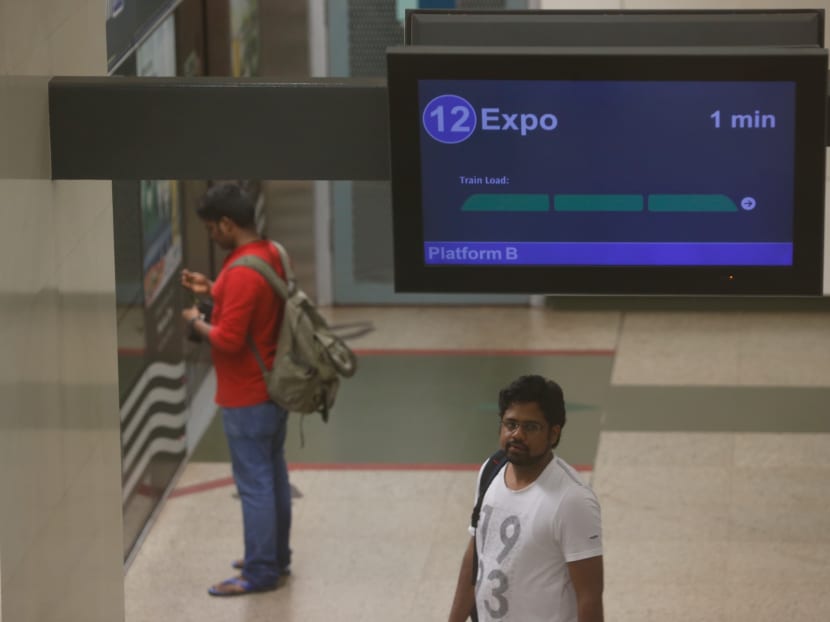Info panel on Downtown Line tells commuters which trains are crowded
SINGAPORE — By the end of next week, commuters waiting for a train on the Downtown Line (DTL) will be able to tell which train carriages are most crowded and which carriages offer them the best chances of getting a seat.

The Land Transport Authority is testing out a new Passenger Load Information System, which will inform commuters the level of congestion in trains via traffic light colour codes.
SINGAPORE — By the end of next week, commuters waiting for a train on the Downtown Line (DTL) will be able to tell which train carriages are most crowded and which carriages offer them the best chances of getting a seat.
The Land Transport Authority (LTA) is testing out a new Passenger Load Information System, which will inform commuters the level of congestion in trains via traffic light colour codes.
The system, which went live at Downtown MRT Station on Monday (May 14), will be rolled out to five more stations between Chinatown and Bugis on Tuesday. All 34 DTL stations will have the info panel up by end of next week.
The system works by displaying trains’ passenger loads through colour codes similar to traffic lights on the LCD screens at station platforms as the trains approach.
Green means there are available seats, amber means only standing space available, while red means limited standing space with no available seats.
The data is transmitted wirelessly every few seconds from the train, which detect the passenger load weight through sensors in individual carriages, to the train stations.
When the train arrives at the platform, the loading information will be updated as passengers board and alight. Work on this new system began about eight months ago, before DTL 3 opened in October last year, said Mr Chia Choon Poh, director for rolling stock and depot engineering at LTA, at a media briefing on Monday.
The authorities looked at operations around the world and found a similar system along the Yamanote Line in Tokyo, Japan.
Besides commuters, the data will be useful for LTA planners and designers, said Mr Chia. He said: “They can understand, at certain hours, the certain travel behaviour of passengers, so they can better manage from an operational angle or even in the event of emergencies.”
The LTA will monitor the system over the next six months before deciding whether to implement it on other MRT lines. They will also conduct surveys to get feedback from commuters.
Mr Harry Zheng, who works in business development, said the system would help him have a more comfortable journey by letting him know where there is more standing space.
“Maybe if they tried it on the East-West Line, it would be better … I don’t think it’s that hard to gauge which carriages are crowded (on the DTL),” the 26-year-old added.








